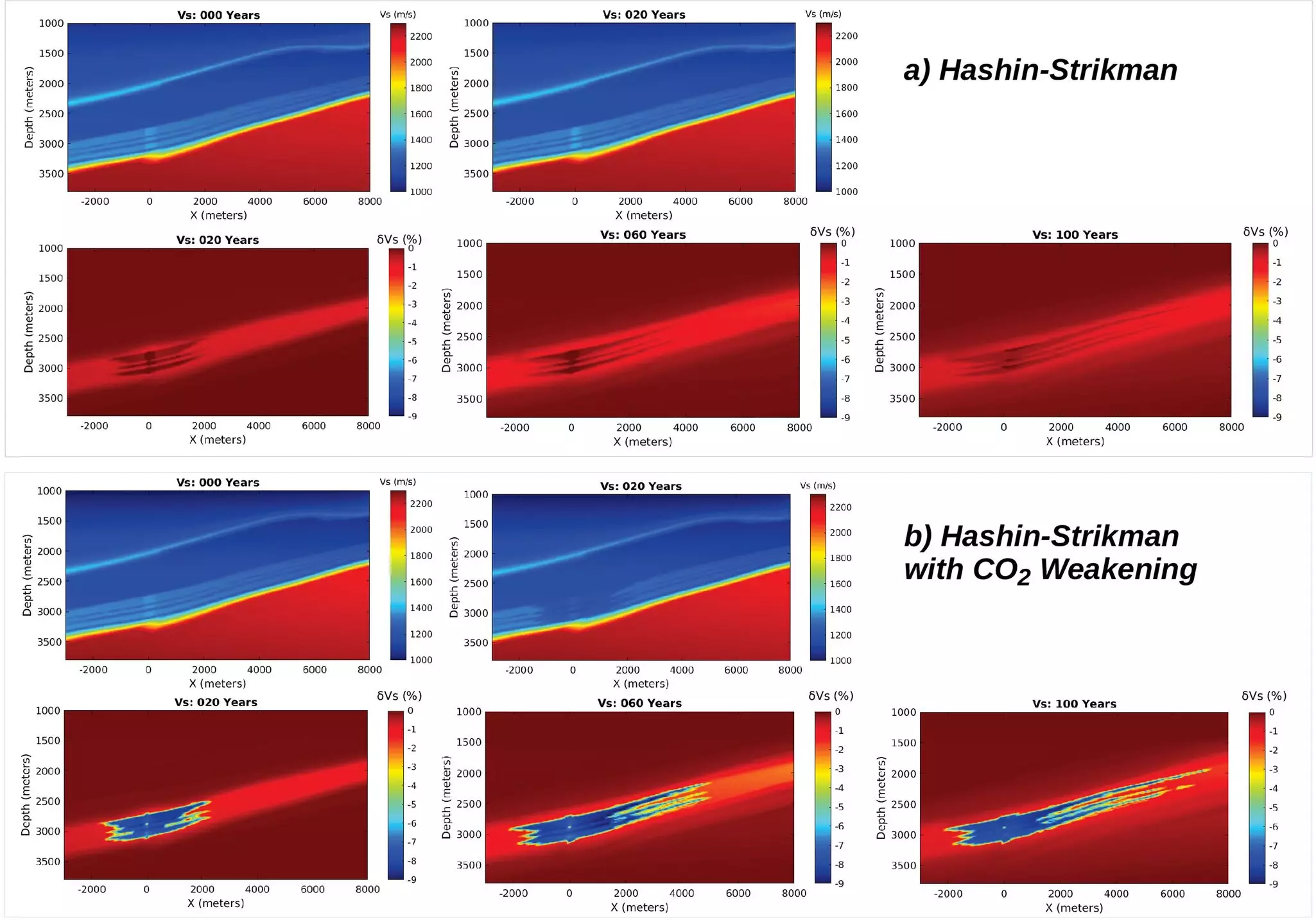In an era increasingly defined by the impacts of climate change, innovative solutions for reducing greenhouse gas emissions are not just welcome; they are essential. Among these solutions, carbon capture and storage (CCS) stands out as a pivotal component in our fight against climate change. The process involves sequestering carbon dioxide (CO2) generated from industrial activities deep underground, where it is meant to remain buried, preventing it from entering the atmosphere. However, the practicalities of CCS rely heavily on robust geological science, particularly the interactions between CO2 and the surrounding rock formations.
Research conducted by Los Alamos National Laboratory has unveiled a revolutionary rock physics model that promises to significantly enhance our understanding and monitoring capabilities of these complex interactions. The research, published in the journal Communications Earth & Environment, underlines the pressing need for more dependable methods to ensure that the CO2 we store underground remains contained.
Current Challenges in Geological Storage
Existing monitoring techniques, predominantly reliant on seismic data and the Biot-Gassmann equation, have come under scrutiny. While the Biot-Gassmann model is widely utilized, it suffers from notable limitations, particularly in its treatment of the interactions between CO2 and rock. As Neala Creasy, the first author of the study, emphasizes, this model fails to consider several crucial factors such as nonlinear stress dependence and the chemical reactions that alter the rock structure over time. Consequently, researchers have noted that long-term exposure to CO2 can considerably affect the rocks’ elasticity, leading to challenges in accurate modeling.
The inadequacies of the current approaches can create risks, particularly the concern of leaks—an issue that can have grave implications for both the environment and human health. If CO2 escapes into the atmosphere after being sequestered, the fundamental goal of reducing greenhouse gas emissions is undermined. Thus, a more sophisticated and precise model is imperative.
Introducing the New Rock Physics Model
The new rock physics model developed at Los Alamos addresses these critical gaps. By enabling a more nuanced and comprehensive understanding of how CO2 interacts with reservoir rocks, this model introduces significant advancements in how scientists can monitor geological carbon storage. According to Lianjie Huang, a senior research scientist at the lab, the model not only improves accuracy in measuring compressional-wave velocity changes but also provides insights into shear-wave velocity variations, both of which are crucial for assessing the mechanical properties of the rock formations.
What sets this model apart is its ability to reflect larger changes in elastic properties, which laboratory experiments corroborate. Such developments pave the way for more effective seismic monitoring. With improved accuracy, scientists can discern CO2 movement within the underground reservoirs better, allowing for timely detection of leaks.
A Step Toward Reliability in Monitoring
The implementation of this new model is not merely an academic exercise; it has significant real-world implications. As policymakers and industry leaders look to CCS as a viable strategy for reducing emissions, the reliability of geological storage becomes paramount. Any lack of confidence in the monitoring processes could lead to a hesitation in adopting carbon capture technologies on a wider scale.
The ability to quantify and monitor the behavior of stored CO2 effectively transforms our approach to carbon sequestration, acting as a cornerstone for risk assessment and management. By precisely understanding how CO2 impacts rock characteristics over time, we can better safeguard against potential environmental hazards, reassuring communities and stakeholders about the safety of CCS operations.
The Future of Carbon Storage Technologies
As the urgency of climate action intensifies, the success of carbon capture and storage technologies will hinge upon our scientific prowess to innovate and adapt. The research from Los Alamos is a landmark contribution to this field, ushering in a new era of geological carbon storage that emphasizes reliability and precision.
While the new rock physics model is a substantial advancement, it should be viewed as part of an ongoing journey toward effective climate solutions. Continued research and development are crucial for addressing the myriad challenges associated with CCS. Nevertheless, the strides made by the Los Alamos team create a beacon of hope and a blueprint for future innovations in carbon sequestration strategies, driving us closer to a sustainable future.

